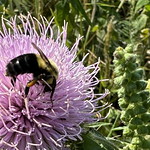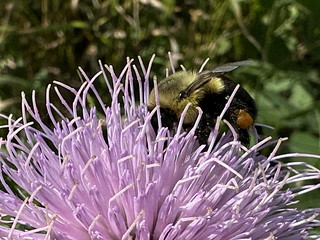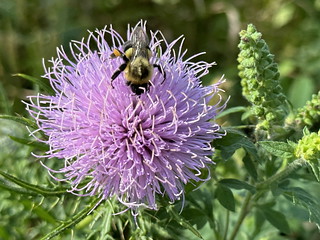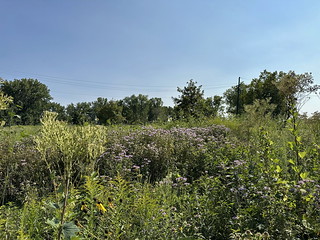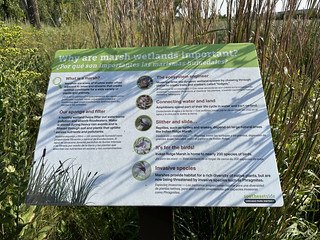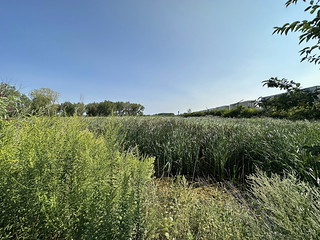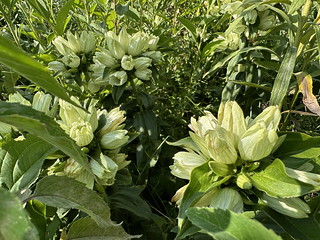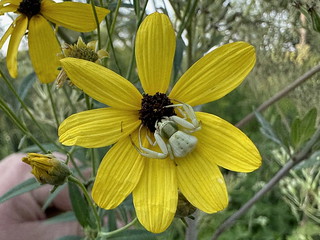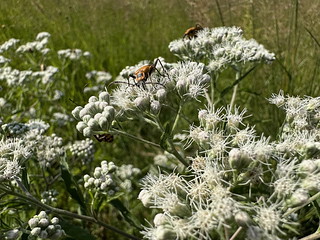
Tag Archives: wildlife
Dam removal, here and along the Klamath River
Starting in 2011 with Ryerson Woods Dam, many of the low dams along the upper Des Plaines River have been removed — they hinder a healthy ecosystem, endanger kayakers, and don’t serve a purpose. There’s more on these dam removals here.
A bigger project has been happening on the Klamath in the Pacific Northwest, where much larger dams have been removed. It appears that chinook salmon are returning. Enjoy the peaceful tinkling sounds of the flowing river.
Hotel and ground squirrels at Illinois Beach State Park
July 14, 2024
I was curious about the reopened hotel at Illinois Beach State Park, so went there for a drink and appetizer — with a lengthy detour to the souvenir shop. The lobby still feels empty, and I wonder if there will be any renovation work. It was hard to tell if there’s work in progress, stalled, or not yet begun. There also weren’t many people around, but there might not be mid-afternoon.
The restaurant was also uncrowded. By mid-drink, the only other patron, several tables away, began a monologue on a slight pretext and went on for at least 20 minutes or more — almost nonstop. I can’t tell you about what because I tuned out the barrage of words. There may have been a “how times have changed” theme. Later, the staff apologized, but of course not their fault. Some people need someone to hear them, I suppose.
We didn’t have a lot of time left and I wasn’t up to walking, so we drove around for a bit. Illinois Beach State Park is the only place where I’ve seen 13-lined ground squirrels. The first time there was one in the shorter grass alongside the road. I always hoped to see them again — and now I have.
This time they were in the grass around the parking lots. They popped up like midwestern meerkats. I didn’t count their lines.
For dinner, we went to Stone Creek Grill in Winthrop Harbor, which has the outdoorsy vibe I love.
As long as a canoe doesn’t fall on my head.
Twilight in the Rookery
May 9, 2024
This winter the Illinois Audubon Society held a Zoom series on the black-crowned night heron (BCNH), a species with worldwide distribution that is endangered in Illinois. At one time they nested in the Calumet area, but for the past few years they’ve moved their rookery to the red wolf exhibit at Lincoln Park Zoo.
This isn’t as odd as it may seem. The wolves aren’t a threat to the adults or to chicks/fledglings who stay out of reach. They are a deterrent tot raccoons, skunks, snakes, etc., who otherwise could reach eggs or chicks. It’s the same reason I believe people sometimes find fawns in the grass, shrubs, or flowers by their door. People’s presence and activity keep hungry predator mouths away. The BCNHs also like the mix of deciduous trees.
The zoo closes the red wolf exhibit while the BCNHs are nesting — something to keep in mind if you’re planning a spring/early summer visit to the zoo (maybe call ahead).
When as a participant in several Zoom calls about the BCNHs I received an invitation to “Twilight in the Rookery,” I went for it. I haven’t been to an evening event in years, and now usually by late afternoon I’m in agonizing pain. Admission was expensive, but I’m working and how else would I get to see the rookery? If I were in such bad shape I couldn’t make it, it would just be a donation. And now I can take a cab vs. two buses. Done.
The evening began near the Japanese macaque exhibit. I’m embarrassed to say how long it took me to find the partially hidden building. After introductory speeches, we were divided into groups to spread out over the area.
It was hard for me to stand for 30 to 40 minutes before we moved on (thankfully to an area with a bench — I didn’t care that it was wet).
At first I saw only a few BCNHs. Counts from previous years have been as high as 600. I started to see some flying around — incoming and outgoing. After we had moved to the second area, I saw more and more BCNHs peering at us from the foliage. It was evening and overcast, so a bit dark, but their shapes were clear. The biologists must have a methodology for finding and noting nest locations and counting. I couldn’t do it. I’d lose track.
Toward the end we saw the heron trap they’d mentioned. Should a BCNH be tempted to enter, a human observer brings the door down. The BCNH undergoes measurements, examinations, etc. It may even be fitted with a wee backpack — more on that in a bit.
At this point, I should mention someone had told me earlier about a friend who rescued great blue herons. They’re big and not always cooperative, and one had used its stabby bill to put its rescuer’s eye out. When you see videos on social media with gushing comments about how wild animals appear to be grateful to their rescuers, remember the rescuer with one eye.
On the way back, we stopped to watch two BCNHs fly and vocalize at each other. Our leader recognized them and said they do that often. We also saw a group of up to a dozen headed north.
Back at the half-hidden building, we passed around one of the wee backpacks a few lucky BCNHs are fitted with. They’re lightweight enough not to bother the bird. Somehow, a few have managed to lose theirs, although in some cases not before recording trips north to Wisconsin before their migration south. It’s like driving to Florida by way of Milwaukee or Green Bay. Why?
Heading out, I noticed people had stopped by the lions and thought, “Why not?” His Majesty was snoozing. One of the others rested unperturbed in a position reminiscent of a domestic cat. Another seemed to be resting, but keep a wary eye on me.
There was an extra bonus waiting for me outside the west gate — a huge amount of lilacs in full bloom. That heavenly scent. It was the last of the lilacs for me for 2024, and a happy way to end an informative, enjoyable Twilight in the Rookery.
Indian Ridge Marsh redux
August 29, 2023
J and I decided to see Save the Tunes at Chellberg Farm, but detoured to Indian Ridge Marsh, or Park 565 in Chicago Park District nomenclature. The last visit to Indian Ridge Marsh was in 2019, when the area by the Norfolk Southern tracks was open water.
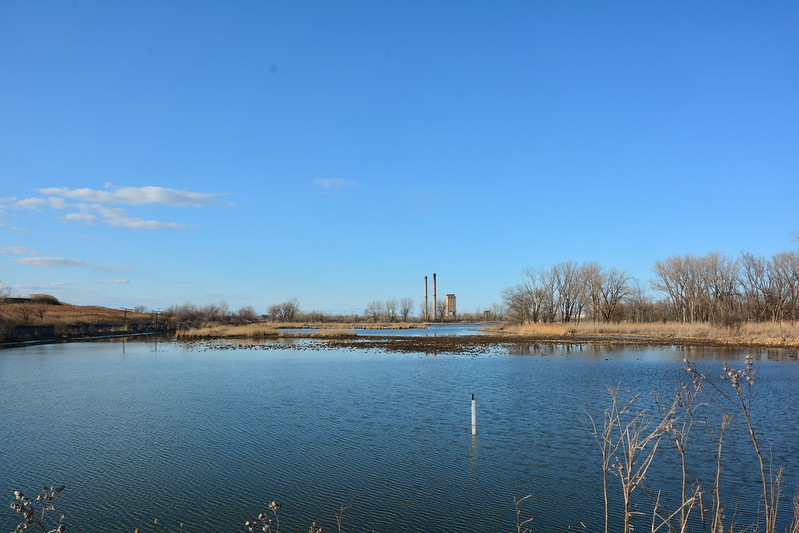

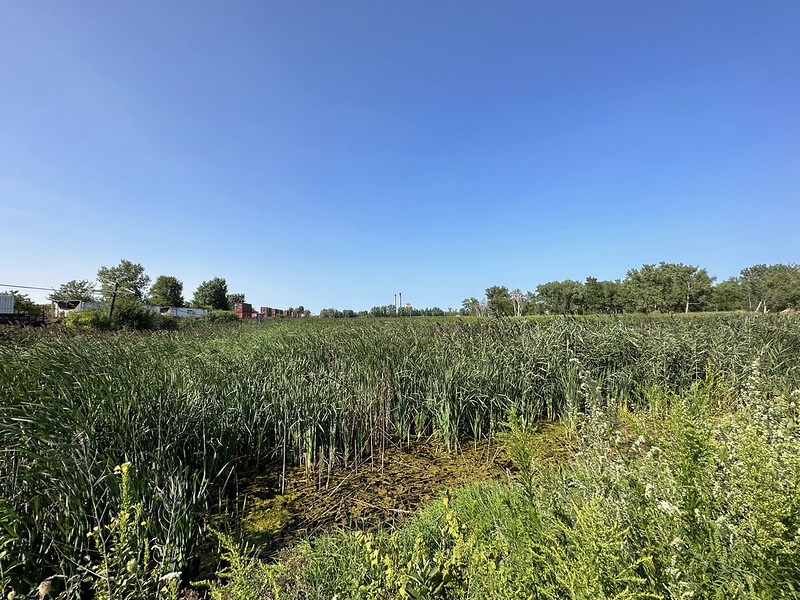

First, we had to get there. We passed meadows of native flowers, including compass plants whose disappearance Aldo Leopoldo eloquently lamented. They’re thriving in natural areas in and around Chicago, such as the Calumet Region here and at Morton Arboretum.
We spotted monarchs and other insects, including an army of goldenrod soldier beetles intent on perpetuating the species.
A surprise awaited us at the end of this westbound trail (another trail, too wet and muddy to negotiate in 2019, heads south). The open water had filled in with aquatic plants in on both sides of the trail. which dead ends at the Norfolk Southern line. I hope they’re native. There was a piece of heavy equipment in the area, so I’d guess the Chicago Park District and volunteers are working on it.
I didn’t want to miss Save the Tunes, so I didn’t dawdle on the way to the lot. J called me back to look at beetles, which I never saw because was distracted by this:

This is a female white-banded crab spider, the same species of spider I witnessed killing a painted lady, an Eastern tiger swallowtail, and a skipper at Perennial Garden. They choose a flower and lie in wait for their unsuspecting pollinator prey. This one may have turned slightly yellowish after a few days on this tall tickseed flower. The ones I’d seen before (when I noticed the dying or dead butterflies) were embedded in the more intricate blooms of a butterfly bush or other flower and were nearly impossible to see. The male, by the way, is smaller and more colorful, and dines on nectar.
My final sighting of the day was a pair of American goldfinches on a pair of compass plants, with the female closer to the trail. At Perennial Garden, I’d noted the goldfinches favored the tiny stand of compass plants there.
Aldo Leopold would be happy.
Red-winged blackbirds, a wildlife hazard (signs of the times)
Hungry squirrel and red-tailed hawk
Pileated woodpecker pair at Sapsucker Woods
Christmas present for birders from the feeders at Sapsucker Woods (Cornell). The pileated woodpecker to your right (middle feeder on the post) is the male.
Parker Mill County Park
June 27, 2022
Nearly five minutes of tranquility (with traffic) along Fleming Creek in Parker Mill County Park, with guest appearances by an eastern comma and some barely discernible ebony jewelwings.
































